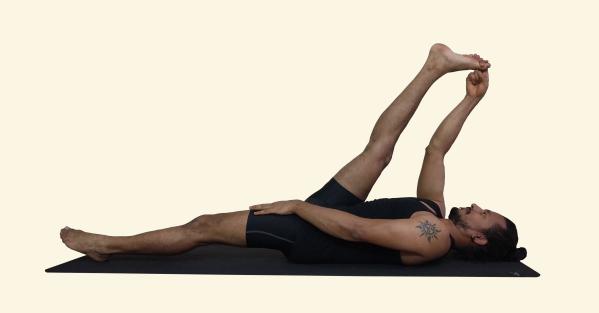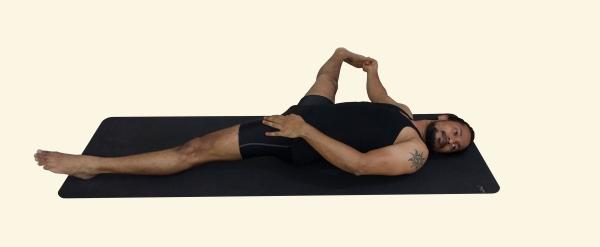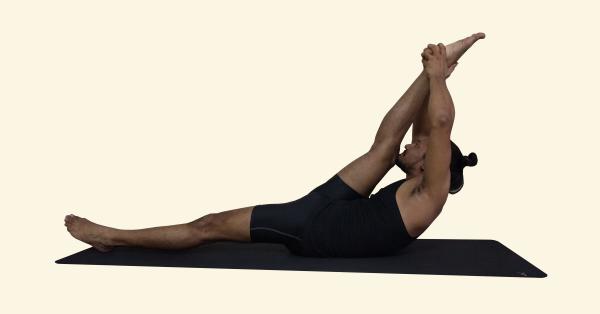Translation: Supta- Lying down, supine, reclining; Pad- foot; angusth- big toe; asana- posture.
Supta hasta padangusthasana A, B, and C are a series of three postures that work on the hamstrings, groin, and hip abductor muscles.
These postures are also a part of the ashtanga vinyasa primary series (Yoga chikitsa). These are done one after the other on one side and then repeated on the other side.
Steps:
Supta hasta padangusthasana A

- Start lying on your back with your legs stretched out, and arms by your sides, you may put a thin cushion or folded blanket under your head to increase comfort.
- Exhale, bend your right knee, bringing it close to the chest. Grasp the big toe between the middle and index fingers of the right hand. Keep pushing your left heel away from the body with the legs strong.
- Inhale, raise your right leg up, and straighten it, try to keep the shoulders on the ground (if this is not possible use a belt or strap around your foot), and look at the big toes.
- Hold the posture breathing deeply for 5 breaths, deepening the stretch as you exhale
- To exit exhale and release the foot, lowering it slowly to the ground, and repeat with the left leg (if you are doing all the three variations A, B and C then continue with B on the same side)
Supta hasta padangusthasana B

- From position A, keep the spine and the back of the left leg on the floor, rotating the hip and bringing the right leg out to the right side of the body, and look to the left.
- Stay for 5 breaths.
Supta hasta padangusthasana C

- From position B, lift the leg back to the center, and hold around the heel with both hands.
- Exhale Contract the abdomen, and bring the chin to the knee.
- Look to the toes.
- Repeat all the three variations A, B, and C on the other side.
Modifications:
If you don’t yet have the flexibility to perform the full posture.
- Use a belt/strap around your foot as mentioned above.
- Keep the knee slightly bent
- Hold around the back of the knee/calf instead of the toes
Benefits:
- Opens the hips
- Improves digestion and reduces constipation
- Lengthens the hamstring muscles
- Releases gas
- Relieves Sciatica
- Lengthens the spine
Contraindications:
- Diarrhea
- High blood pressure, place a pillow under the head
- Headache/ migraine
Looking for more postures? Try our Yoga posture library.